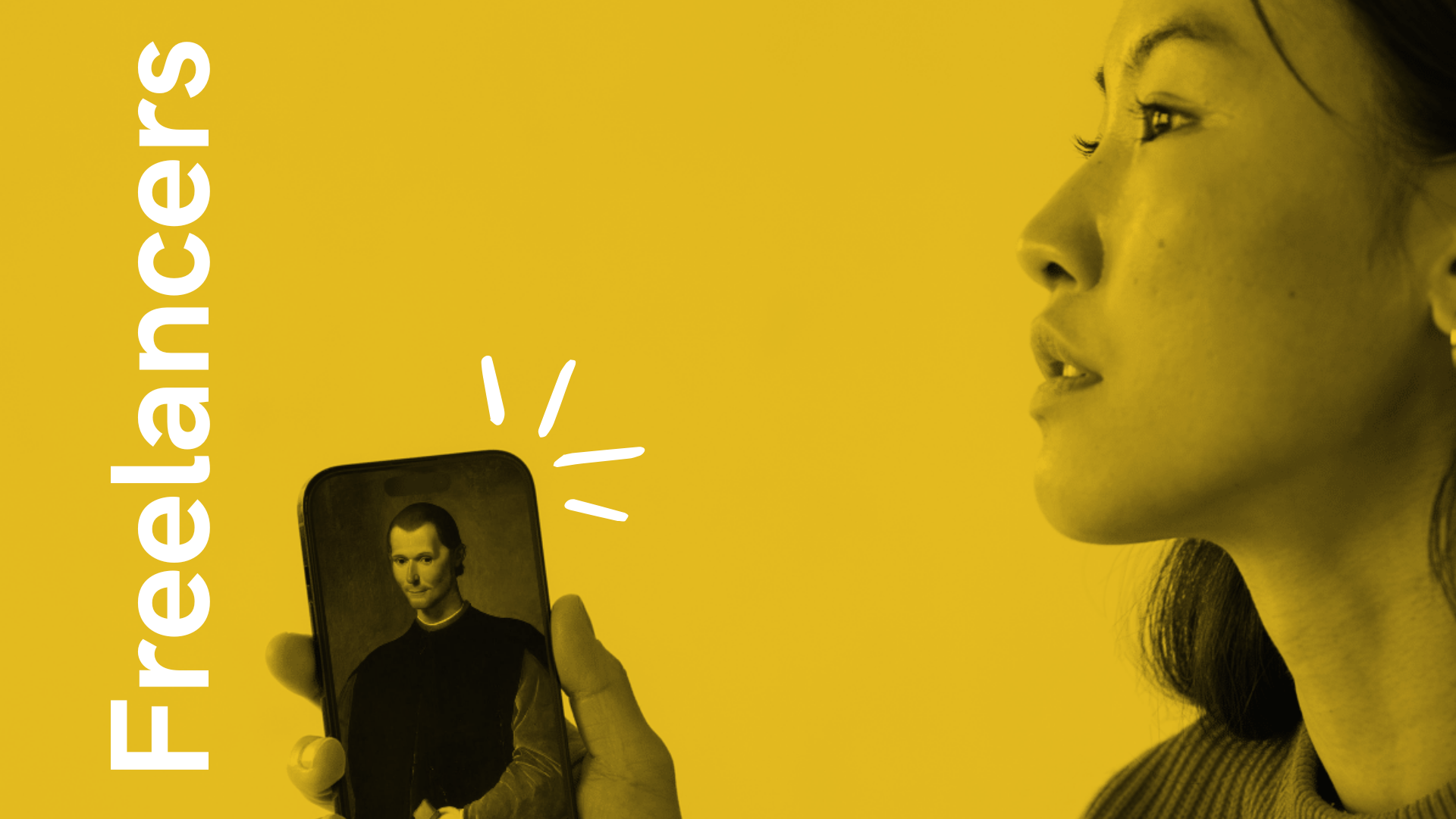The power of storytelling is so ancient that it predates even the Egyptian pyramids. It has been around for centuries—think ancient cave paintings or campfire tales passed down from generation to generation.
Today, however, storytelling isn’t just about entertainment, like movies, for instance. It has become a vital tool in digital marketing. I’ve witnessed how the power of storytelling can transform bland content into something engaging, memorable, and impactful.
Based on my experience as an SEO copywriter, understanding this power can be a game-changer for your company or projects.
In this article, I’ll share what storytelling truly means, the five key elements that make a story work, and how you can harness this power in your digital marketing strategy.

The Power of Storytelling
The Power of Storytelling: What is storytelling?
Storytelling is the ability to create engaging narratives. While anyone can create a story, not all of them are compelling. It’s like reading a movie synopsis that sounds exciting, only to watch it and feel like it’s more of a punishment than entertainment.
If you don’t think storytelling is all that important, let me start with a simple truth: storytelling is everywhere. Whether it’s in a Netflix series, a heartfelt Instagram post, or even a product description, storytelling is how we connect with others.
For example, when a friend shares a problem they faced and explains how a product solved it, that’s storytelling. Think about how many products you’ve bought because a friend recommended them. That’s the power of storytelling in action.
This is why so many companies adopt a humanized approach in their ads, weaving stories into every message. Recently, Airbnb has released numerous ads featuring relatable situations with a story behind them.
Take the Girls Trip ad, for instance, where the narrator says: “If you share a hotel room with friends, you also share the bathroom, the mirror, and a tiny hair dryer. Get an Airbnb, and get more space.” That’s storytelling—connecting the product with the buyer through a relatable narrative.
How create engaging stories?
To create engaging stories, you need to craft narratives in which your audience can see themselves. I’m not sure if you like Spirited Away, but it’s one of the movies that marked my life. It’s a beautiful animated film, like every piece of art that Studio Ghibli creates.
As a kid, I always loved that movie because Chihiro, the protagonist, was alone and had to solve her problems on her own. I think I connected with her character because I’m the older brother, so I saw a bit of myself in her as a child.
Much like the Airbnb ads, when viewers can see themselves reflected in the story, they form a connection with the brand. This is how storytelling fosters deeper engagement and emotional ties with the audience.
What is the goal of storytelling?
At its core, storytelling is the art of conveying a message through a narrative. It’s not just about sharing information, but about creating an experience that engages emotions, sparks curiosity, or inspires action.
Think about the last time you got hooked on a YouTube ad or a brand campaign. Chances are, it wasn’t because they listed features or facts—it was the story that grabbed your attention. You saw yourself as part of that story.
Stories make us care because they speak to our emotions. As a copywriter, I’ve learned that people remember stories far better than stats or dry explanations. A well-told story gives your audience something to relate to, something that sticks.
For instance, as a child, you probably didn’t fully understand the value of effort. However, you could understand that through effort, the third pig in The Three Little Pigs was able to protect his brothers and keep his house safe from the wolf.
For me, the power of storytelling relies on being the bridge between a brand and its audience. It humanizes your message, turning it into something people don’t just hear, but feel.
In today’s digital world, where everyone’s attention span is shrinking, storytelling is your secret weapon to stand out.
The Power of Storytelling: What are the 5 key elements?
Now, let’s break down the magic formula. After working on countless projects, I’ve found that the best stories—whether in movies, books, or marketing campaigns—share five essential elements:
A Relatable Character
The power of storytelling relies on a relatable character; after all, every great story has a protagonist. In marketing, this character is often your audience. They need to see themselves in your story, facing challenges they can relate to.
For instance, if you’re selling eco-friendly products, your “character” might be someone trying to live sustainably despite the challenges of modern life. When your audience identifies with the character, they become emotionally invested.
Conflict or Challenge
A story without conflict is like a cake without icing—bland and forgettable. The conflict doesn’t have to be dramatic, but there needs to be a challenge or obstacle to overcome.
Maybe it’s a struggle with finding time to exercise, managing finances, or making a sustainable choice. In my experience, the best conflicts are the ones your audience can personally relate to.
My advice to you is to introduce the conflict right away. Not only does it create an opportunity to make the character relatable, but it also grabs the audience’s attention from the start.
A Clear Goal
Every story needs a purpose. What does the character want to achieve? The goal creates tension and keeps the audience invested.
In marketing, this could be anything from saving time to improving health or learning a new skill. Make the goal crystal clear so your audience understands what’s at stake.
However, the best stories I’ve encountered as an SEO Copywriter are those that help the audience *understand* the goal. There’s a well-known concept in storytelling: “Show, don’t tell.”
Don’t just tell your audience that the character wants to improve their health—show them trying and failing. Don’t simply state that the character wants to learn a new skill—show them struggling with time constraints. Show, don’t tell!
The Power of Storytelling is Emotion, But Not Just one.
Emotion is the glue that holds your story together. Whether it’s joy, frustration, hope, or triumph, tapping into emotions is how you connect with your audience.
I always ask myself: “What do I want my audience to feel when they hear this story?” Emotion is what drives action, whether it’s clicking “Buy Now” or sharing your content.
A couple of years ago, I heard Quentin Tarantino say on Jimmy Kimmel Live that “The perfect movie kind of crosses all aesthetics.”
What I took from that, and what I’ve incorporated into my creative process, is the idea of using multiple emotions to guide the audience toward the action I want.
Of course, it’s not always possible—this depends on how long your copy is—but I always try to keep that in mind. In summary, aim to find the emotion behind each beat of your ad, content, or any other piece of marketing.
A Resolution
Every good story needs an ending, and in marketing, that resolution often comes in the form of your product or service.
It’s the solution to the conflict, the answer to the goal. But be careful—don’t make it feel like a hard sell. The resolution should feel natural and satisfying, not forced.
When these five elements work together, you create something memorable. It’s a formula I’ve relied on countless times to craft content that not only engages but delivers results. Check out my other content: A Guide for Beginners on Copywriting in 3 Steps.
The Power of Storytelling: How to use storytelling in digital marketing?
So, how do we bring storytelling into digital marketing? Honestly, this is where the magic happens. Concepts like “Show, don’t tell,” “The Hero’s Journey,” and many others are out there, but the way you tell the story is where the power lies.
Over the years, I’ve found that storytelling is incredibly versatile—it works for blogs, ads, emails, and social media. Let me share some of the ways I use storytelling to create impactful marketing content, with a step-by-step guide.
1. Know Your Audience Inside Out
Before you tell a story, you need to understand who you’re talking to. What are their pain points? What inspires them? What challenges do they face?
By knowing your audience, you can craft stories that feel personal and relevant. I often start by imagining my ideal customer’s day-to-day life and thinking about what kind of story would resonate with them.
My advice is to start by answering these questions through research—look at YouTube comments, Quora, or even Reddit. Find the most common issues or concerns that people share. This will help you create stories that connect on a deeper level.
2. Make Your Brand the Guide, Not the Hero
Here’s a golden rule I swear by: your brand is not the hero of the story—your audience is. Your role is to guide them, helping them achieve their goals or overcome challenges.
Think of your brand as Yoda, not Luke Skywalker. For example, a fitness app isn’t the star; the person transforming their health with its help is.
After all, your copy needs to focus on the audience and their achievements. Your brand is simply the tool they use to get there.
3. Leverage Visual and Emotional Cues
In digital marketing, visuals are just as important as words. Pair your story with images, videos, or graphics that amplify the emotions you’re trying to evoke. For example, a heartfelt testimonial video can bring a story to life in ways text alone can’t.
The right visuals create a stronger emotional connection and make your story more memorable, enhancing the impact of your message.
Of course, it all depends on the type of your copy. Check out the 4 types of copywriting in my other blog post by clicking here.
4. SEO and Storytelling: A Perfect Match
I’ve found that storytelling and SEO go hand in hand. Google loves content that engages readers, and what’s more engaging than a well-told story?
Use storytelling to create longer dwell times, reduce bounce rates, and even inspire backlinks as people share your compelling content.
Incorporating storytelling into digital marketing doesn’t have to be complicated. Start small—try weaving a story into your next social post or blog article. The more you practice, the easier it becomes to connect with your audience in a meaningful way.
Did you like our content about the power of storytelling? Share it! And don’t forget to check out the brand-new articles we have on the blog to learn more and achieve the best results with your website.



























![How to make a headline? [Learn Copywriting in 3 steps]](https://matheusxaviercopy.com/wp-content/uploads/2024/11/Picsart_24-11-08_23-10-34-695-scaled.jpg)
![What is off-page SEO for website? [Understand in 1 minute]](https://matheusxaviercopy.com/wp-content/uploads/2024/11/Picsart_24-11-05_09-49-51-640-scaled.jpg)
![Content and SEO: Why do technology companies need it? [2024]](https://matheusxaviercopy.com/wp-content/uploads/2024/10/Picsart_24-10-15_17-25-02-236-scaled.jpg)


![SEO: What are the key elements? [Understand in 30 seconds]](https://matheusxaviercopy.com/wp-content/uploads/2024/10/Picsart_24-10-09_11-57-22-785-scaled.jpg)
![SEO: What is it in simple terms? [Understand in 30 seconds]](https://matheusxaviercopy.com/wp-content/uploads/2024/09/Picsart_24-09-10_11-16-03-082-scaled.jpg)


